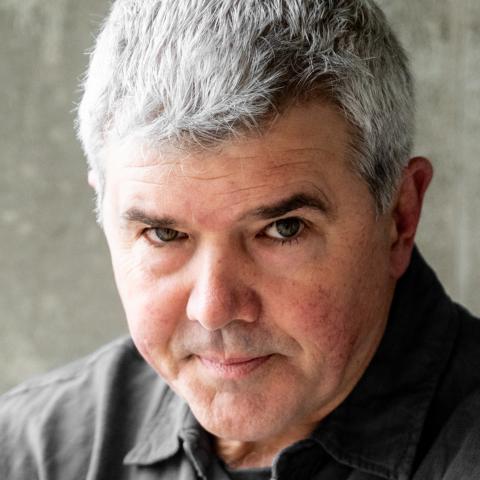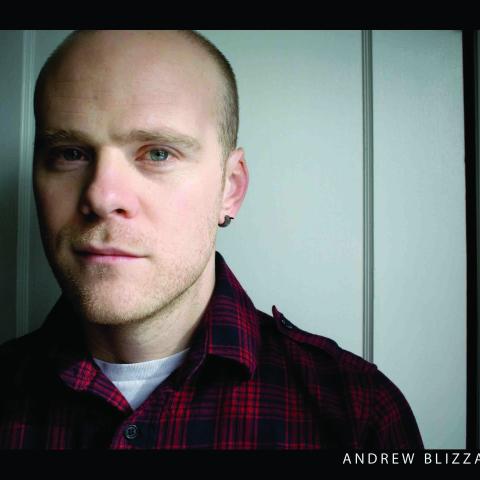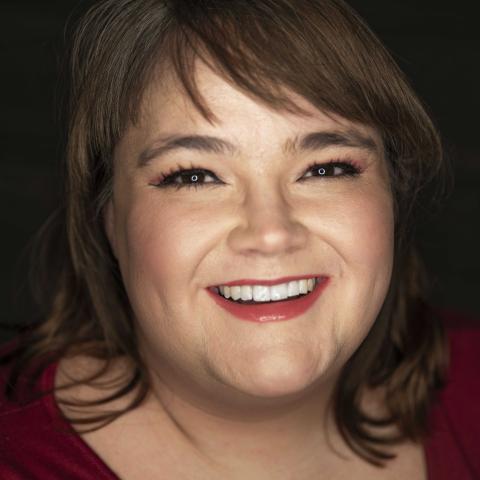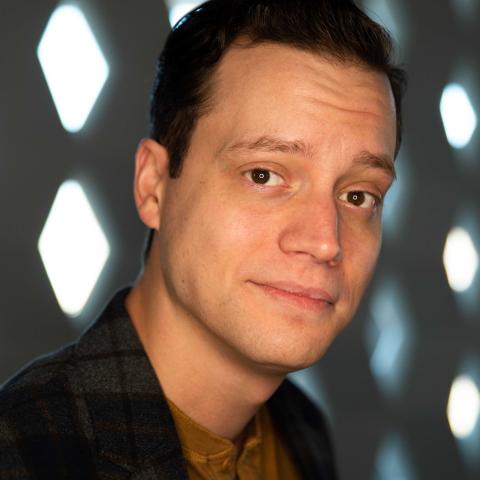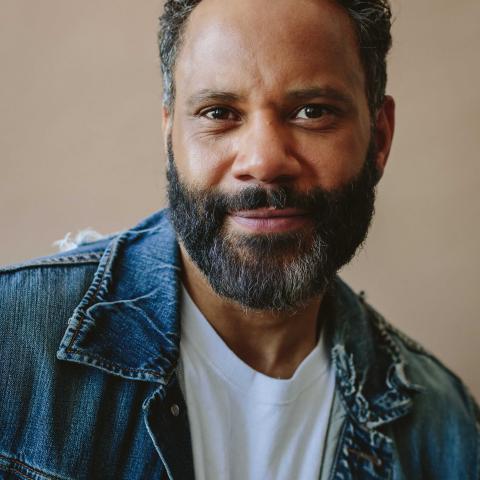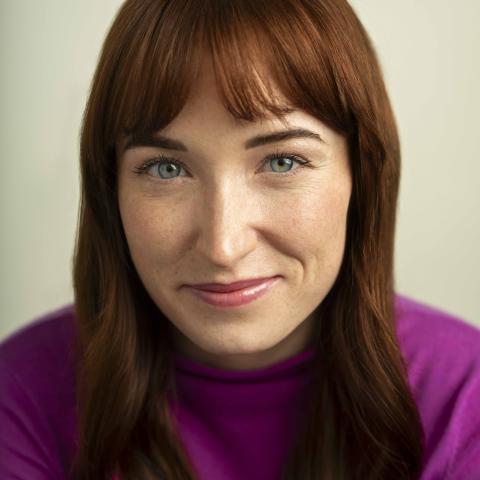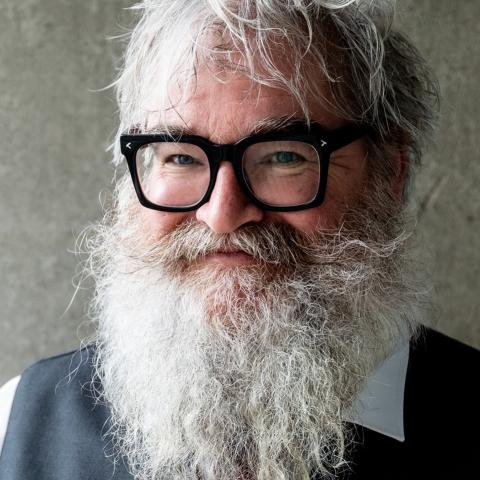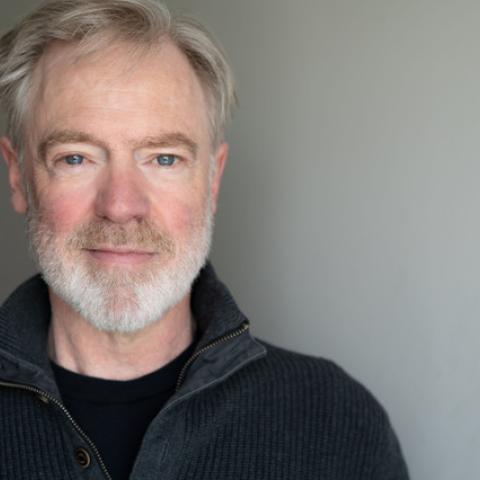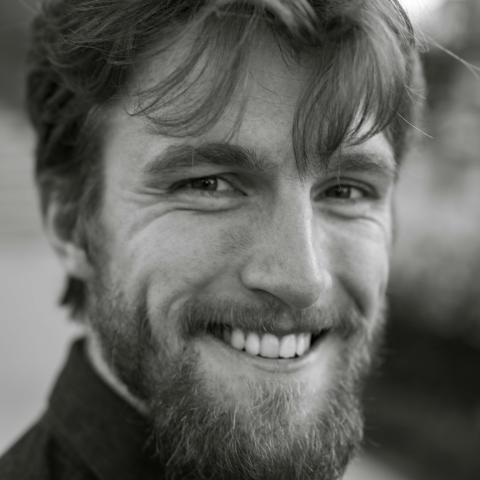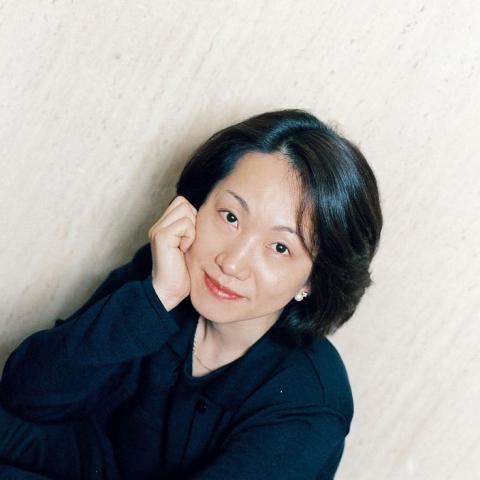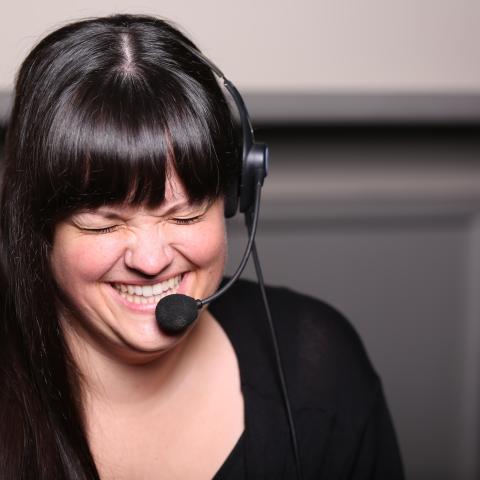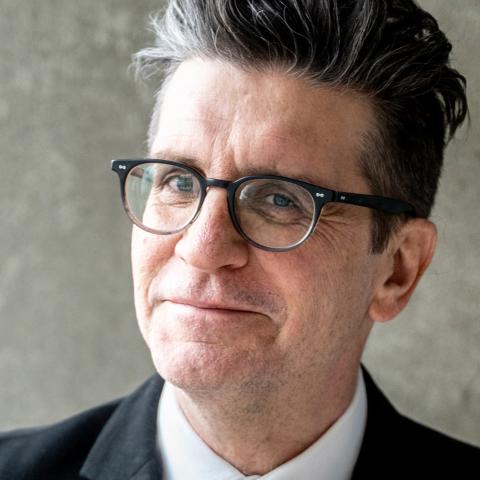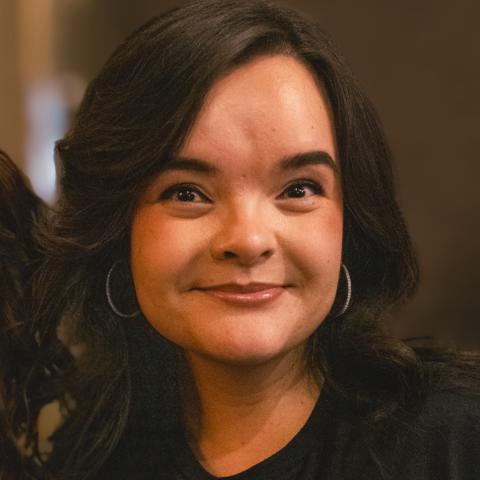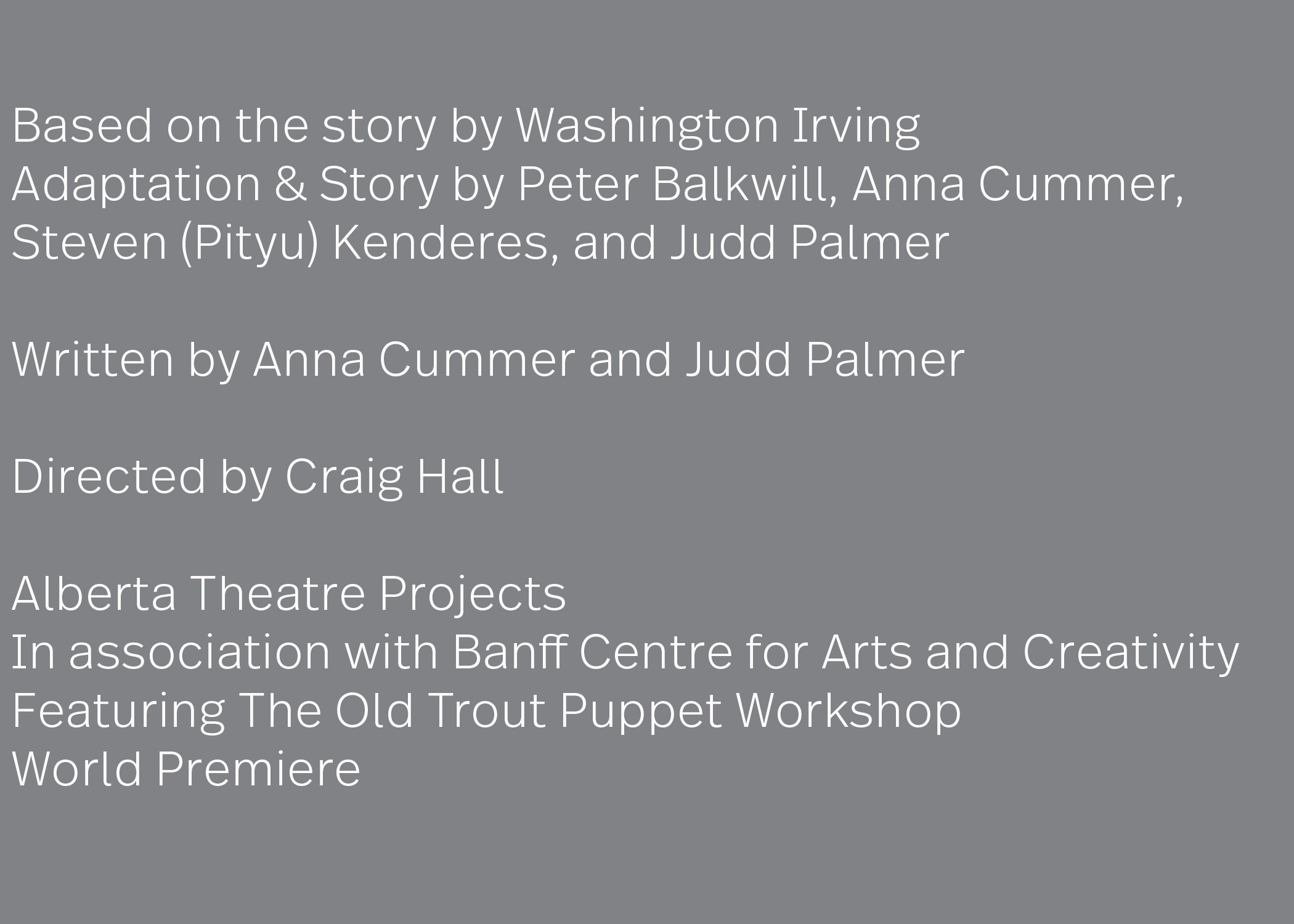
Artistic Credits
CAST (in alphabetical order)
CREATIVE TEAM
Playwright's Note
by Anna Cummer
Pete Balkwill, Pityu Kenderes, Judd Palmer, and I were only a few scenes into our outline of Headless, the working title for our version of The Legend of Sleepy Hollow, when the world shut down due to Covid-19. Once the initial shock dissipated and we all realized we would have time on our hands with the theatre industry completely closed, we began writing virtually from our separate homes (Calgary, Halifax, and Victoria). This project was nothing less than a godsend in a period of uncertainty and creative starvation. We found a dedicated rhythm to writing and delved deeply into the source material and its potential relevance for modern audiences. While the world stood still, the delightful spook and buried political commentary of Washington Irving’s piece inspired and drove us forward.
We all assumed once the world emerged from the pandemic and Donald Trump left office that our little piece, though surprisingly worthy & relevant, would die a slow death when we returned to “normal”. But the unfathomable happened: Trump got a second term in the White House. As things just got stranger and stranger for our neighbours in the South and we Canadians by proximity, the writing team could see how our modern-day reimagining of this classic title continued to resonate in our current climate of truth-skewing and fearmongering.
Almost 250 years since the Declaration of Independence, the United States of America teeters on the edge of dramatic and violent change – again. Where the echoes of the past – “No Kings” – resound still. Where the price of food and inequitable taxation can make or break the day-to-day lives of citizens and jeopardize the effectiveness of a governing body. Where stories are told to justify the ends although the means are questionable and cruel. Where an empire crumbles slowly but surely. For a country born of violence will always be haunted by it. And our great neighbours to South are in the throes of such a haunting.
The Legend of Sleepy Hollow is a sharp examination of what it means to recover from divisive violence, to rebuild your world anew, and to move forward faithfully into uncharted territory. But what ghosts remain in this new world order that will require exorcism in the not-so-distant future? And are we all left headless when the truth is no longer perceptible or even required? Fear-inducing questions to be ignored at our peril. Here’s hoping cooler heads prevail.
Please enjoy this thought-provoking and multifaceted spooky story originally conceived by Washington Irving and brought into the 21st century a-kicking and a-screaming by The Old Trouts (and me).
Anna Cummer
The Slaight Family Foundation support of Theatre Arts at Banff Centre
This week’s world premieres of The Legend of Sleepy Hollow and Kohkom's Babushka are made possible through the generous support of the The Slaight Family Foundation. Their significant donation to Banff Centre for Arts and Creativity directly supports theatre creators, producers and presenters as the sector continues to recover from pandemic-related closures. Thanks to The Slaight Family Foundation, Banff Centre has the opportunity to support the development and presentation of two world premieres, and facilitate our inaugural Stage Management and Theatre Producer training intensive programs.
You can learn more and purchase tickets for Kohkom's Babushka at this link.
In 2022, The Slaight Family Foundation donated $15 million in total to 22 Canadian organizations, Banff Centre was the only one chosen outside of Ontario.
A message from Alberta Theatre Projects
Welcome to The Legend of Sleepy Hollow!
We are thrilled to launch Alberta Theatre Projects’ new season with this bold Canadian adaptation of Washington Irving’s gothic classic, written by Anna Cummer and Judd Palmer, and brought to life through the endlessly inventive imagination of Old Trout Puppet Workshop. Created in association with Banff Centre for Arts and Creativity, this production reflects the power of collaboration and the impact of artists working together to reimagine timeless stories. The Old Trouts’ unmistakable creativity infuses the tale with wonder, menace, and dark humor that feels especially fitting for October, arriving just in time for the eerie spirit of Halloween and serving as the perfect spark to ignite our year ahead.
As we reflect on last year’s 50th Anniversary Season, we are filled with gratitude. Together, we celebrated a half century of extraordinary storytelling, and the response from you, our audiences, artists, and community, was nothing short of inspiring. That milestone season has renewed our energy and reaffirmed our vision for the “new” ATP, a theatre company that is both rooted in its rich history and fearlessly stepping into its future.
Launching this season with Sleepy Hollow is no coincidence. It is a story that straddles the line between the familiar and the unknown, tradition and reinvention. In many ways, it mirrors where we find ourselves as an organization: honouring the past while daring to explore the uncharted.
We cannot wait to share this thrilling journey with you, and we are so glad you have joined us at the start of what promises to be another unforgettable season.
With gratitude,
Haysam Kadri, Artistic Director
Peita Luti, Executive Director
About the Old Trouts
The Old Trout Puppet Workshop was founded on a ranch in southern Alberta back in the strange winter of 1999. We were a small gang of old buddies, with a fondness for beards and wood and wool and other old-fashioned and pleasant things; the world was uneasy with the threat of Y2K, and we felt an urge to huddle together for mutual protection, and to dedicate ourselves to something fragile, ridiculous, and gentle, out on the edge of the world. So we learned to carve puppets, and paid our rent through wholesome labour; we collected eggs, fed the pigs, cooked big stews, and premiered our first show to a bunkhouse full of cowboys and Hutterites.
For the record, the Hutterites were more impressed than the cowboys. We took that show into Calgary to the legendary alt-theatre festival known as the High Performance Rodeo, and people clapped; in that moment, an insatiable craving for applause was born in us, and the warm contentment of our ranch camaraderie turned into mean and craven Ambition.
We've been labouring under the lash of that evil spirit for almost twenty years now, during which time a great deal has changed. We moved to the city, for instance, and now operate out of a workshop next to an enormous distillery in industrial Calgary. It's a thriving operation that has grown much larger than the original hairy few. Heaps of people are employed at various points in the year for various projects. We've got a sporadic apprenticeship program, technical and administrative wings, and a shwack of productions either in development or on the actual road at this exact moment.
We've toured our productions across Canada and into the United States and Europe. We've mounted ten mainstage shows, most of which are lurking in crates at the workshop, ready to deploy: The Unlikely Birth of Istvan, The Tooth Fairy, Beowulf, The Last Supper of Antonin Carême, Pinocchio, Famous Puppet Death Scenes, The Erotic Anguish of Don Juan, Ignorance, Jabberwocky and, most recently, Ghost Opera.
But that’s not all: we also make sculptures, films, children’s books, music, and paintings. Recently we’ve taken to designing shows as well: Twelfth Night for the National Arts Centre and Theatre Calgary, Hansel & Gretel for Vancouver Opera and San Diego Opera, and Peter & the Wolf for the Fort Worth Orchestra. We run workshops year round and deeply harrowing puppetry intensives in Banff and New England every year or so.
The taloned grip of Ambition has been fierce upon us. Where are we going? Will we ever understand what hollow ghosts we've become? Can we ever retrieve our innocence, now that it is lost?
"Irving's Remains"
The Story of Not-So-Sleepy Hollow
Andrew Loman, Associate Professor, Department of English, Memorial University of Newfoundland
Who knows what the Trouts will get up to with “The Legend of Sleepy Hollow”? They have a beautiful record of plundering the graveyards and slaughterhouses of literature, unearthing authors’ moldering corpuses, diving into their putrefying organons, taking a tract from one and an appendix from another, the spine from a third and the spleen from a fourth, reassembling it all in their “workshop of filthy creation” and teasing the chimera to life. There’s simply no way they’ll be faithful to Washington Irving’s text, as if it were the tongue of St. Anthony, too holy to touch. They’ll be deliciously impious, and thereby make the Headless Horseman thunder again through the nights of the early American republic – thunder, mind you, with the weird grace of a puppet.
They’ve certainly chosen their raw material judiciously. The story’s irresistible. Lummox suckers twit: who doesn’t love that? Ichabod Crane sets his eye on the heiress Katrina Van Tassel only to be outwitted by his rival Brom Bones, who, discovering that Ichabod is terrified of ghosts, dresses up like the Horseman and chases him through the woods, scaring him silly and straight out of town.
Or is that what really happens? Maybe the Horseman’s a real ghost who really assaults Ichabod. Irving is coy on that front. In keeping with an emerging democratic poetics, he doesn’t want anyone to have a monopoly on the truth, so he leaves the ending open.
What one can be sure of is the story’s serious core. Irving wrote it around 1819, after years of economic expansion screeched to a halt. “At the beginning of … 1818,” writes one historian, the country “seemed to be in the highest state of enterprising prosperity; before the end of that year, it presented a scene of general bankruptcy, terror, confusion and dismay.” From seeming prosperity to terror: that’s Ichabod’s path, too. He begins as a thoroughly modern gold-digger. Marrying Katrina would allow him to sell the Van Tassel farmland, using the capital to bankroll “shingle palaces in the wilderness.” Aptly, Ichabod meets the Horseman soon after Katrina rejects him. “Capital” derives from the Latin “caput,” or head. Ichabod dreamed he’d have plenty of capital. It turns out he’ll remain as headless as the horseman – figuratively speaking. And rightly so, Irving implies. The dreams of the modern market produce Panics.
But the Horseman contains multitudes, and through him, Irving also offers his reflections on the Revolution. In Sleepy Hollow, old men reminisce about the war, inflating their contributions, implying that America owes its independence to their own heroic efforts. Their braggadocio is good-natured, but the Horseman, head obliterated by a cannonball, suggests that the real Revolution was different – a killing field where human bodies were torn to pieces.
There’s one further reason to admire the choice of “Sleepy Hollow.” In the library of nineteenth-century American literary “classics” you won’t find a story better suited to puppetry. Ichabod, the would-be gallant, has
hands that [dangle] a mile out of his sleeves, feet that might [serve] for shovels, and his whole frame most loosely [hangs] together. His head [is] small, and flat at top, with huge ears, … glassy eyes, and a long snipe nose …. [One] might [mistake] him for … some scarecrow eloped from a cornfield.
He’s halfway to puppet already. The Horseman, a brainless thing brought to uncanny life, is also notably puppet-like. And these two are the story’s central grotesques. You might say that the climactic race through the woods is high-stakes puppet theatre.
In this new production, of course, it will be.
Special Thanks
Special thanks to Evan Medd, through Theatre Calgary’s Literary Department, for dramaturgical support
Special thanks from the Old Trout Puppet Workshop to Ali DeRegt, Jen Gareau and Braden Griffiths for
their support in additional puppet construction
Special thanks to Cathleen Sbrizzi (UCalgary Wardrobe Department), Rachelle Quinn (Wig Stylist),
and Capitol Hill Show Clinic
Special thanks for the generous support of Canadian Actors Equity Association.
